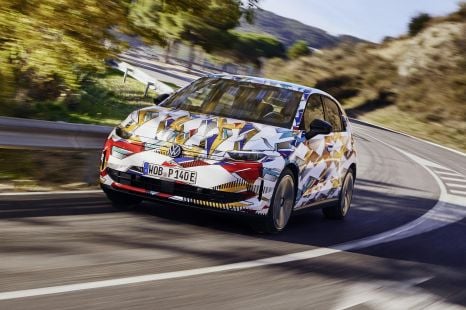

William Stopford
Volkswagen ID. Polo: Electric city car detailed, but petrol power not dead yet
5 Days Ago

Senior Road Tester
OPINION: It was Wakefield Park circuit around 16 months ago and I’d just stepped out of a thoroughly camo’d Hyundai i20 N prototype after a no-holds-barred track session, and was utterly gobsmacked by the experience.
Moments before, I’d been blasting around the same circuit (for the first time) in another highly-anticipated hot hatch prototype from the South Korean juggernaut, in the form of the i30 N with a dual-clutch gearbox for the first time.
The transmission itself represented three-years of intense development under the watchful eye of N architect and performance guru, Albert Biermann, before being signed off. The benchmark had been set sky high before hopping into the diminutive i20 N.
Back then, the manual-only Hyundai was about to go head-to-head with Volkswagen’s proven Polo GTI and Ford’s own turbocharged pocket rocket, the (now extinct) Fiesta ST. More importantly, the i20 N kicked off with a price tag of around $32k plus on-roads.
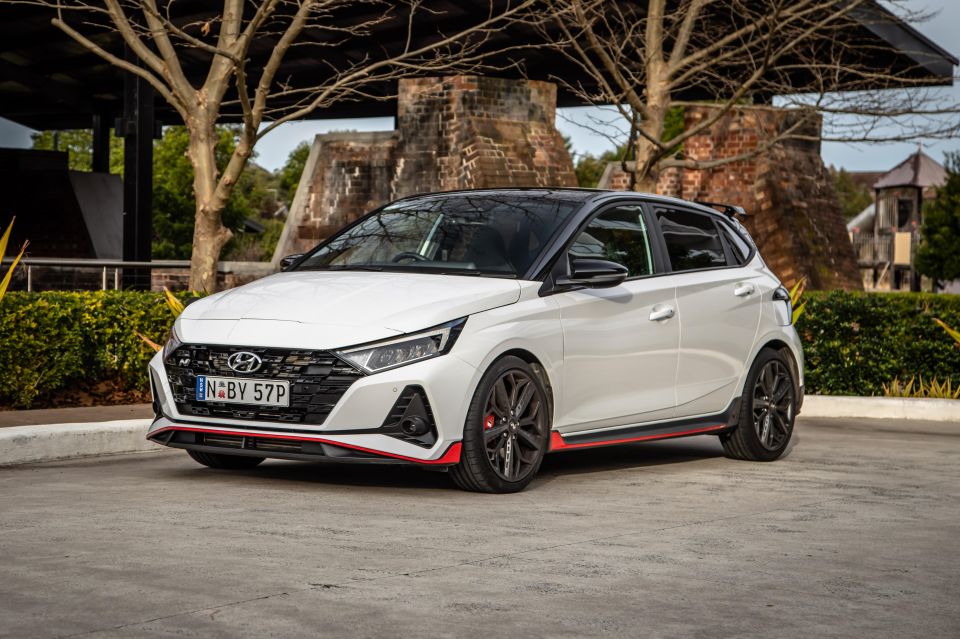
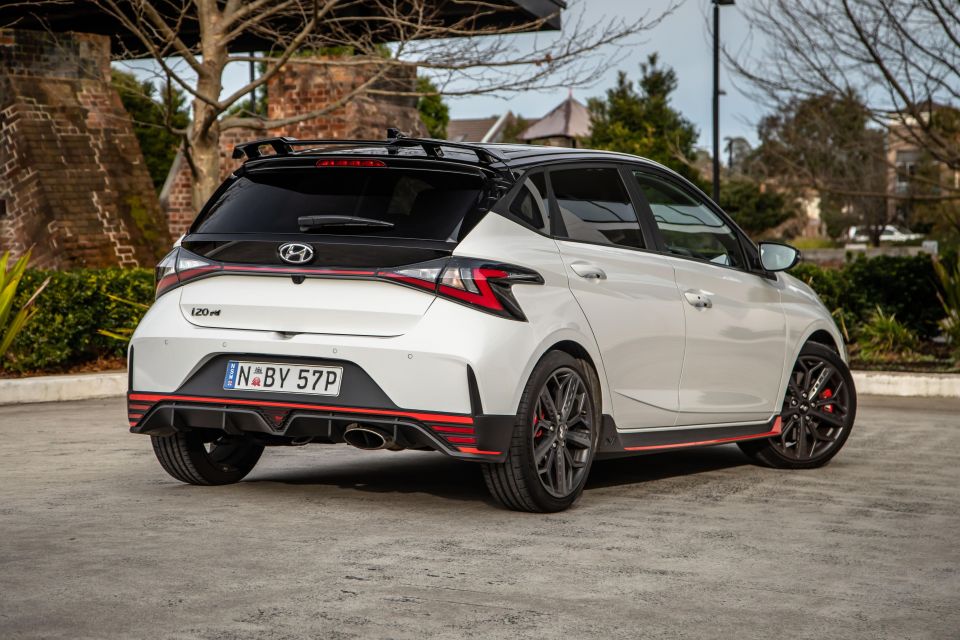
Fast-forward through the global pandemic, and consider war-torn Ukraine and worldwide component shortages, and the $39,000 drive-away i20 N is the only exclusively manual hatch in its class, one which is considerably less expensive than the Polo GTI that carries a hefty $43,360 price tag and a dual-clutch transmission.
What the i20 N’s 1.6-litre turbo might lack in the way of sheer grunt compared with the more powerful 2.0-litre i30 N, it more than makes up for it on the scales.
With a kerb weight of just 1235kg the i20 N is more than 300kg lighter than its big brother, which is one of the things that makes it so positively addictive – on road or track as I was to discover first hand.
On track, the benefits of a lightweight chassis are felt from the first corner you take, and the first time you apply the brakes. In the i20 N that’s going to be very, very late, and only a quick dab at that.
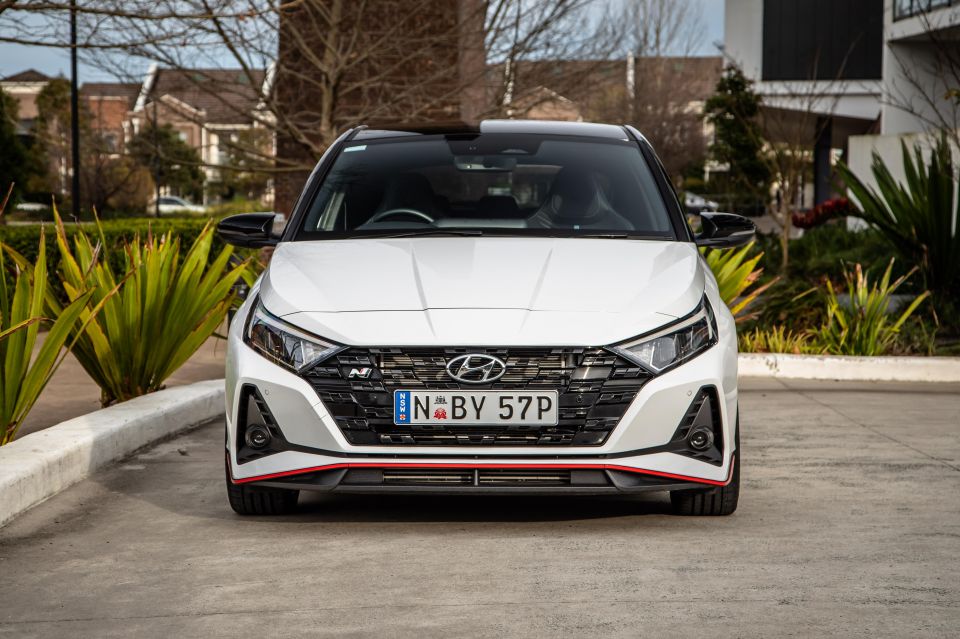
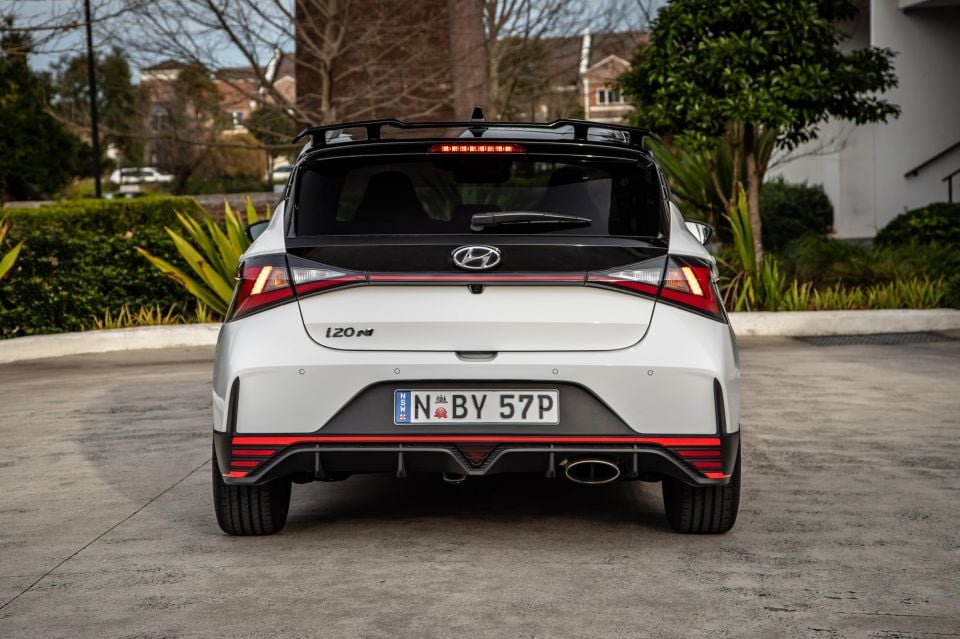
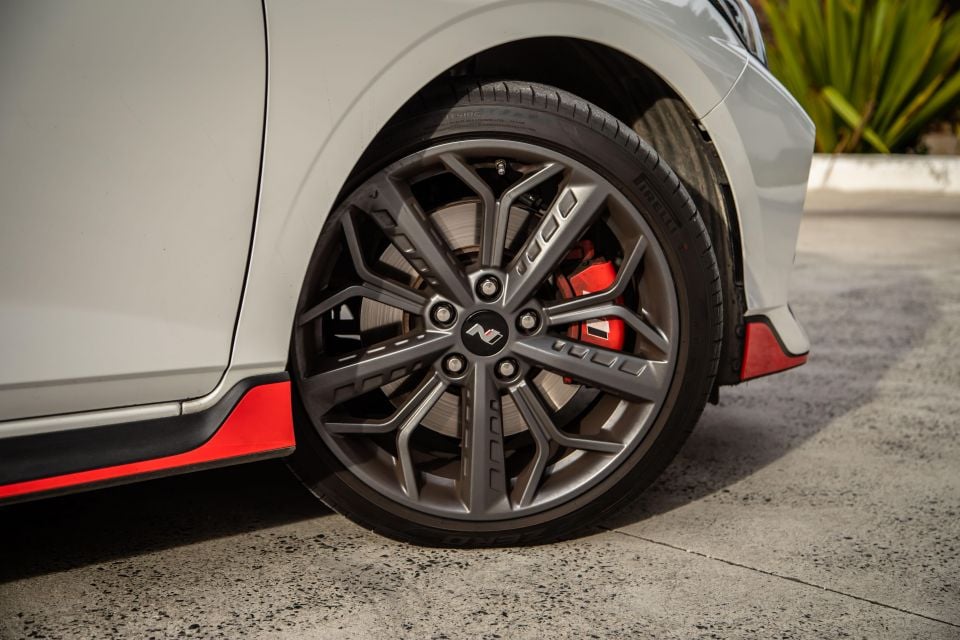
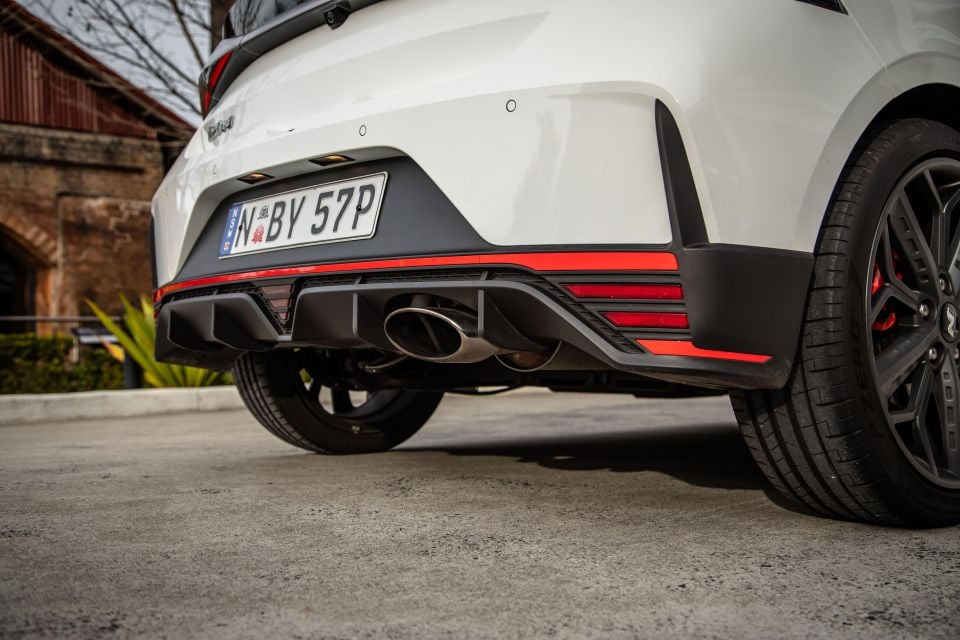
In fact its stopping power is so impressive, at first you’ll struggle to find the optimum braking points. With every lap driven comes a recalibration of your instincts, until such time you realise you’ve gone from hitting the stoppers at the 100m mark down to the 20m mark.
Even then, it still feels like I’ve gone too early. Maybe you don’t need to brake at all? Instead, shifting down a couple of gears with natural engine braking feels about right for turn 10. That was truly staggering to me.
It seems incredible to me that nearly two years on I’ve only just managed to get back into the driver’s seat of one of my favourite budget-priced performance cars, this time in a full-blown production model and not a racetrack in sight.
With so many cool colours on offer, including the hero Performance Blue, I ended up with Polar White (I’m genuinely not a fan of white cars – just too damn boring), though at least it has a black roof and red trim for the front lip spoiler, side skirts and rear diffuser, which provided some contrast.

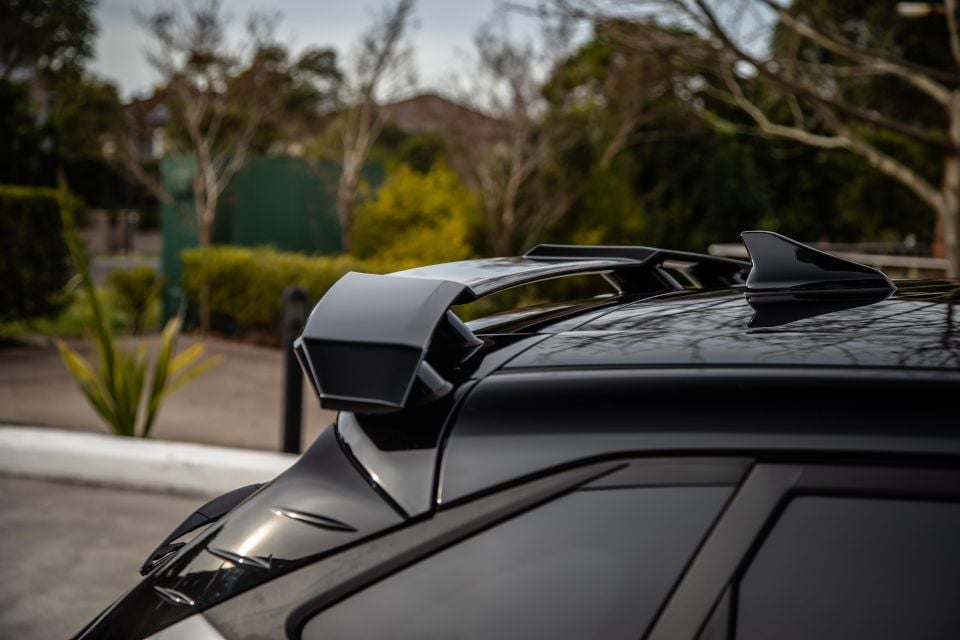
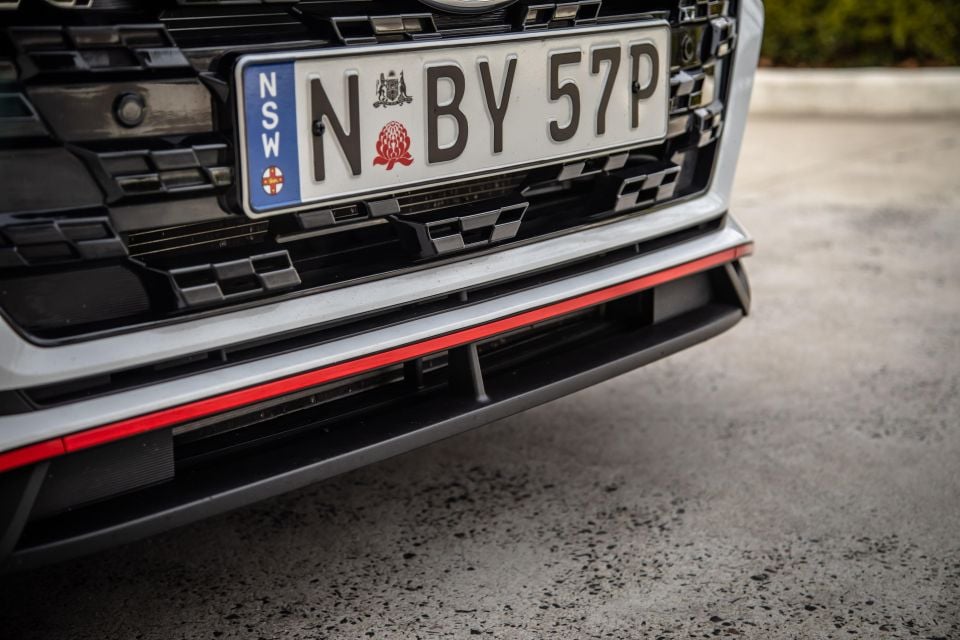
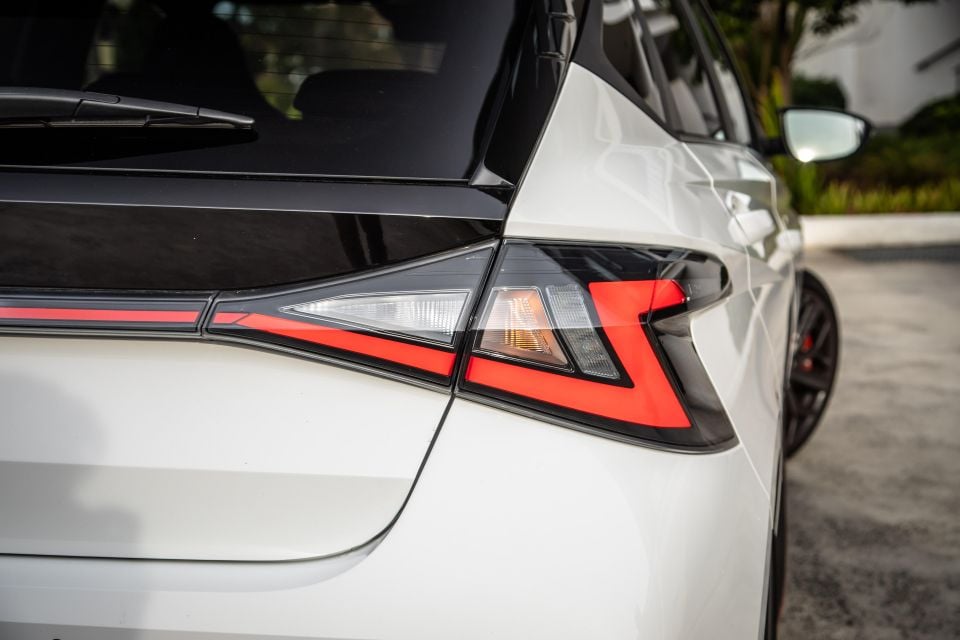
The press kit doesn’t really make any special mention of the grey spider-web-design alloys outside of 18-inch wheels with Pirelli P-Zero tyres but against the white, they come up strong. They’ve got that forged look about them.
Where the Polo GTI has Volkswagen’s typically clean and understated look going for it, there’s a lot going on with Hyundai’s i20 N from a design standpoint.
It’s a hardcore approach that takes a few styling cues from Hyundai’s full-blown WRC car – namely the deep front grille and splitter with side intakes along with its integrated rear diffuser, rear-light assembly and dual-level roof spoiler.
Ideally, I would have preferred a single, centrally-mounted exhaust tip instead of the lopsided, one-pipe design Hyundai ended up going with. Nevertheless, the i20 N exudes a tough, motorsport-style stance so many people seem to like.
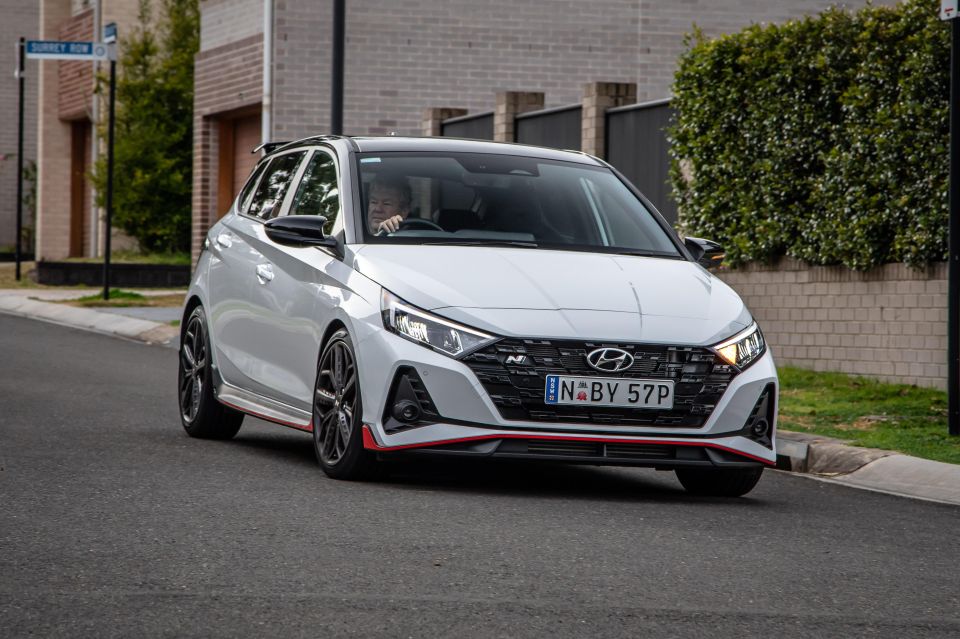
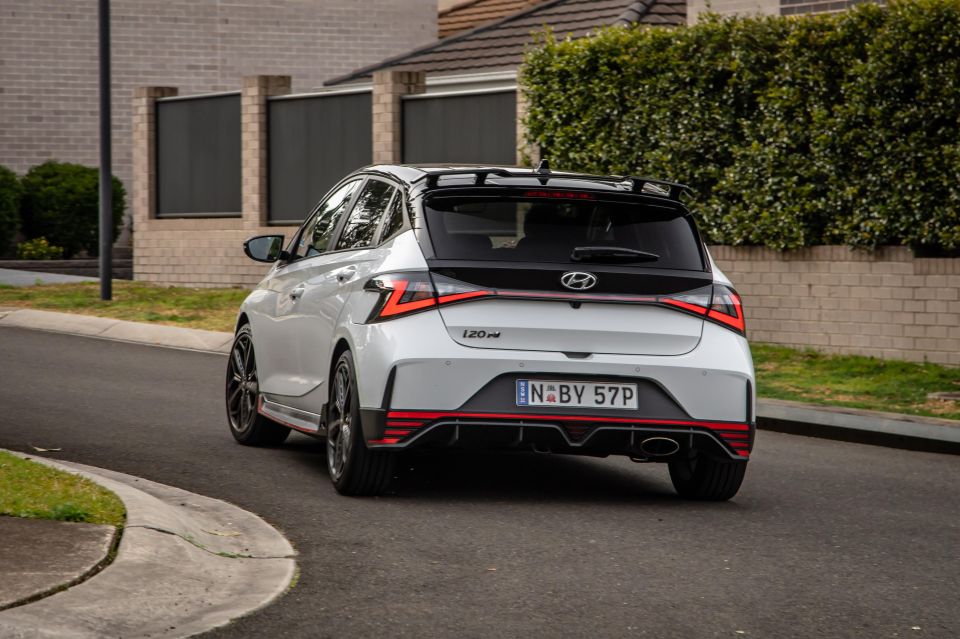
There’ll be some who view it as too boy-racer, especially an older crew, but I’m smack-bang in the middle of that group, and still a big fan. Truth is, it attracts a lot of head turns.
I actually reckon Polo GTI drivers and most other hot hatch drivers fear this thing. And, so they should.
Inside it’s no cut-price stripper. There’s a digital 10.25-inch driver’s display with all kinds of configurability, depending on the drive mode selected. Front and centre is an infotainment touchscreen of the same dimensions, which along with all the usual apps and shortcuts features N mode that brings up track maps and telematics, including a lap timer.
All the important stuff is proper N-designed kit, including things like the round, leather-wrapped steering wheel, complete with two extra-large N buttons in Performance Blue – both of which can be individually customised for engine response, steering, rev-matching, ESC and exhaust sound.
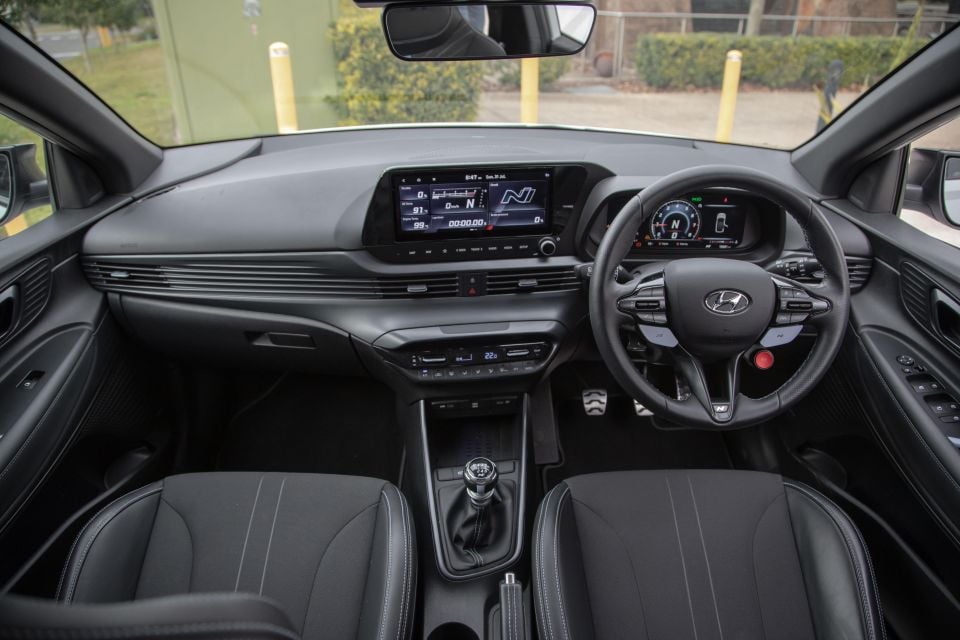
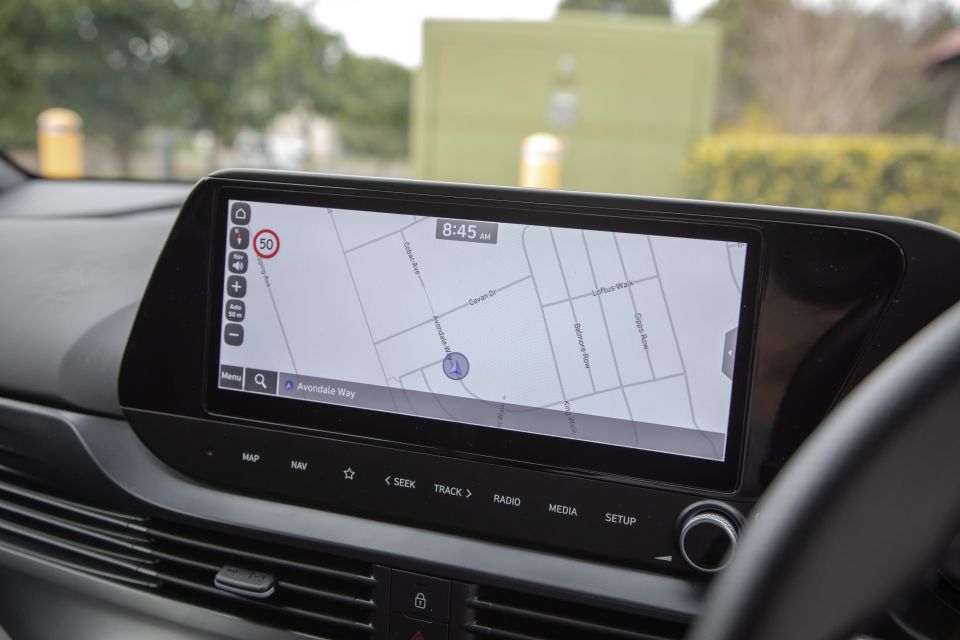
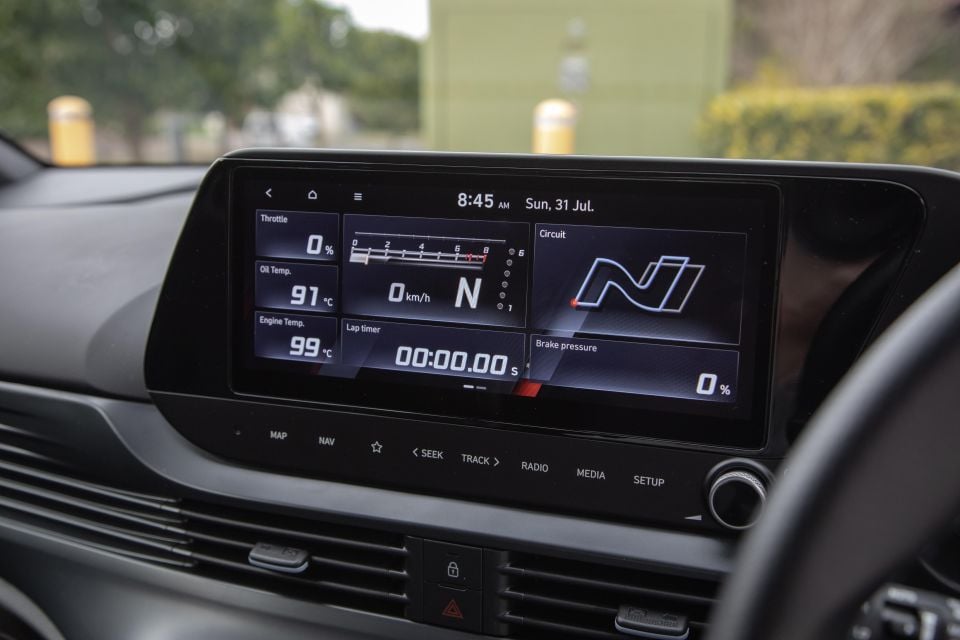
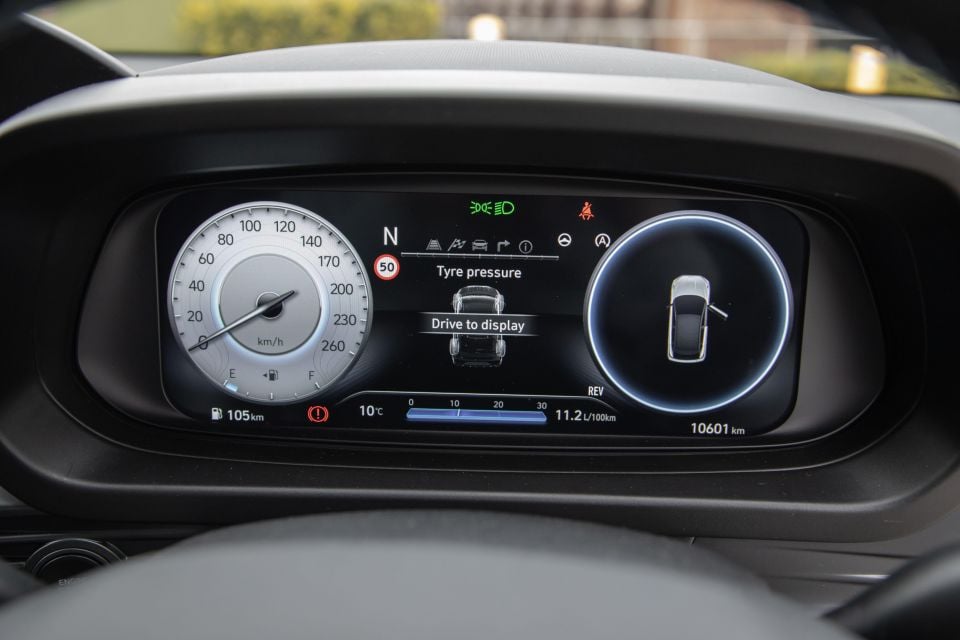
It’s worthwhile taking a few minutes to set these up properly to accommodate different driving conditions.
If you’re like me, you’ll immediately hit either of the N buttons – mostly for the beefed-up exhaust note and more urgent throttle response, given the default mode on start-up is far too subdued.
There’s also a bright-red anodised one-touch REV button that looks a bit Ferrari-esque, as well as all the usual functionality you get on steering wheels these days.
There’s no leather trim but the sports buckets are brilliant for their heavy bolsters, especially on the seat itself, and general comfort. There’s manual adjustment only, but you can drive this thing for hours and hop out as fresh as a daisy or blast around a tight track at full tilt and never once think it’s not enough.
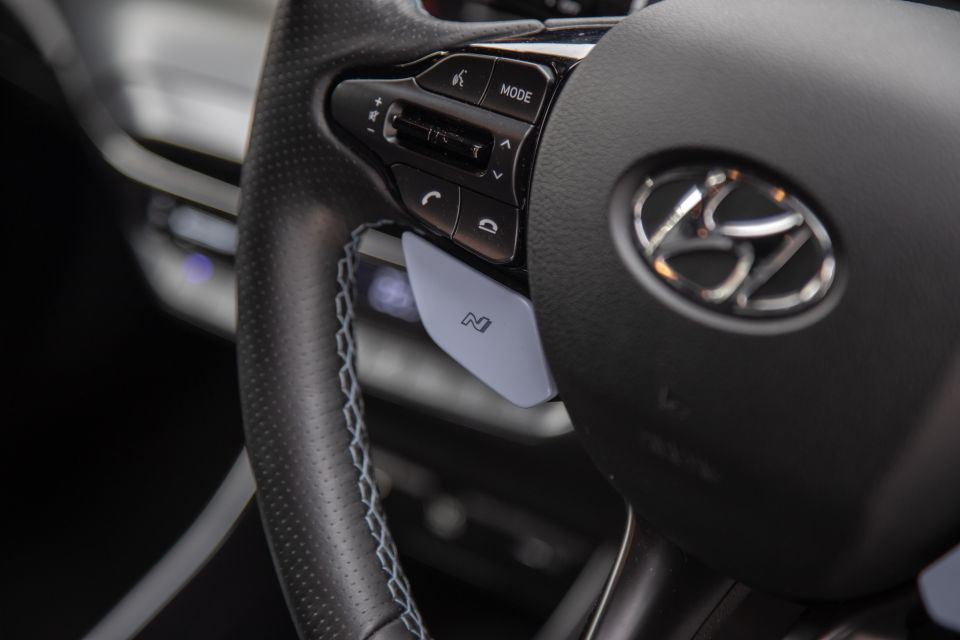
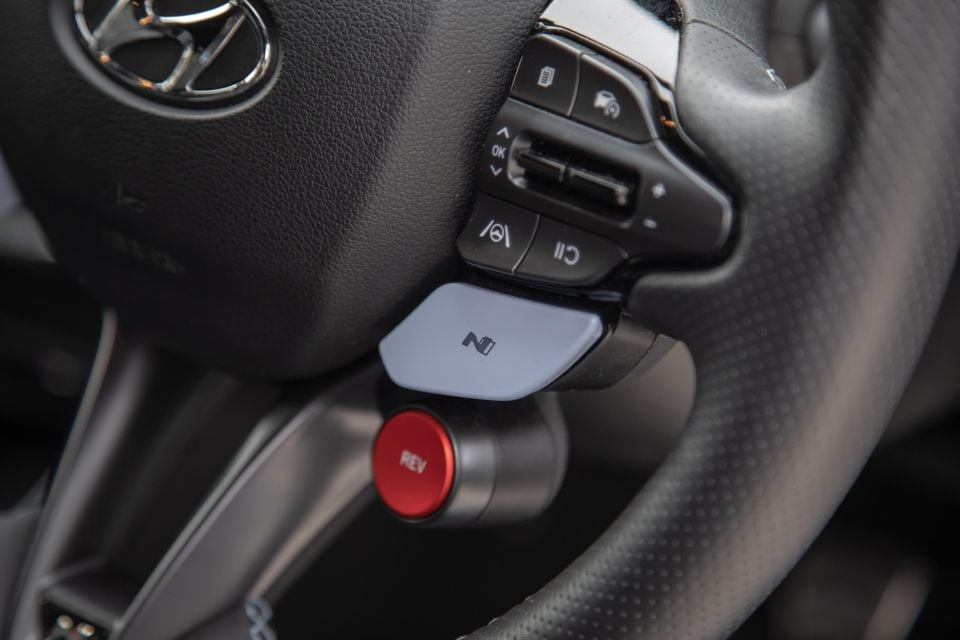
The shifter looks the business, and the throws between gear changes are nice and short. It’s also got a sports pedal box, complete with stainless steel pedals with rubber grip inserts.
About the only gripe I have is the largely hidden start/stop button. It’s perfectly concealed behind the steering wheel, but after a while you just know where to push, so it’s no biggie.
Those who intend to daily the i20 N will find ample storage solutions up front, including a 15W wireless charging pad, a couple of USB-A ports, wired Apple CarPlay and Android Auto, two cupholders, and a small centre-console bin.
While most of the touch points are soft, that doesn’t mean there aren’t any cheap plastics about the cabin. Below eye line, it’s almost all hard stuff – some decent but also some of that nasty pitted stuff we all hate.

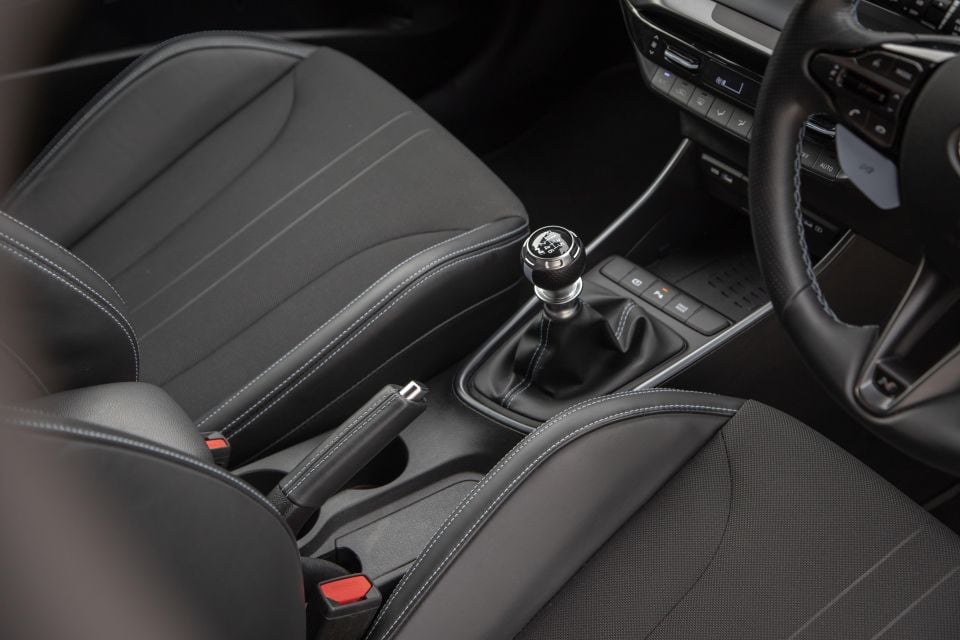
Stretching a smidge over four metres in length, rear legroom is only ample for passengers of average height, but the outer two rear seats have been designed with bolsters of their own which make it more comfortable.
It’s much the same story with boot space in the i20 N; 310 litres behind the second row, growing to 1123L when folded. It’s not quite flat back there, and there’s a small lip to contend with. but it’s easy enough to carry surfboards or even an MTB with the front wheel detached.
It also comes with a luggage net but Hyundai has been short-sighted by not offering rear air vents in the i20 N. It’s not the only one, but how do you forget something like that?
Any time you’re behind the wheel of an i20 N you’ve almost always got a smile on your face. Throttle response is satisfyingly swift from the get-go, thanks to max torque coming on song from just 1750rpm, and pulling hard through to the 4500rpm mark.
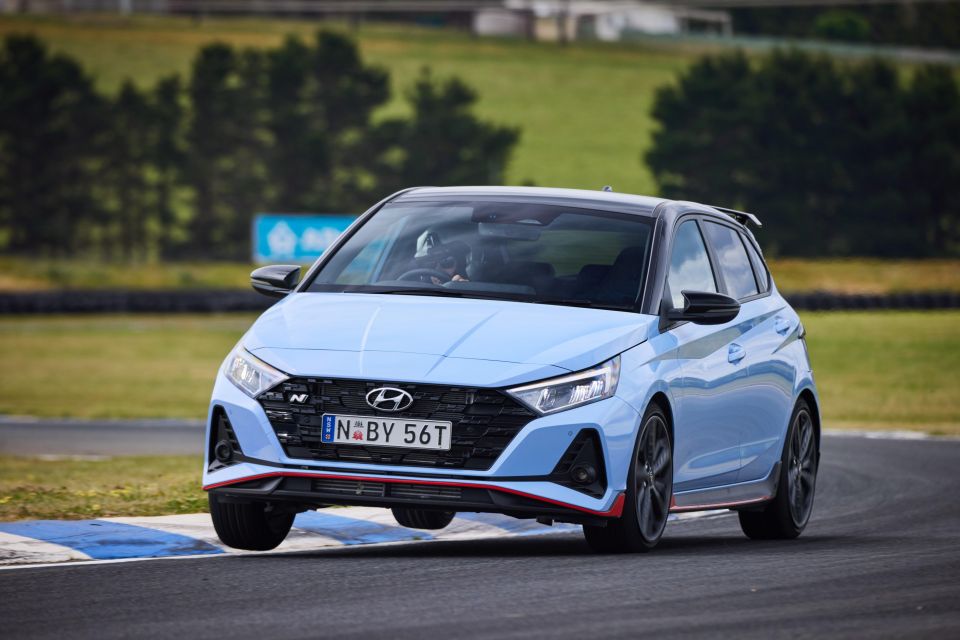
It’s no supercar slayer as far as pocket rockets go these days with the advent of high-priced, super-hatches like the Audi RS3 and Mercedes-AMG A45, nor does it need to be to dish out genuine fun behind the wheel.
It gets the power down through the front wheels without too much fuss, and is demonstrably quicker out of the blocks than the more expensive Polo GTI.
All the controls are nicely weighted and there’s good response. Clutch take up is relatively early, which I like, and the steering is suitably quick and meaty in Sport+. Here’s where you’ll want to set up your own custom settings, given the car’s extensive menu of options for all the major controls.
Tuck it into a few tight bends at reasonable pace and it’s easy to forget how much engineering has gone into the i20 N’s chassis, particularly when it comes to rigidity.

Pretty much everything was reworked to give the i20 N legitimate corner-crushing ability on road and track.
There are 12 points of reinforcement around the monocoque, as well as additional welds and a bolt-in underbody structure that gives the car a high level of stiffness and resistance to twist. No wonder it feels rock solid through the bends and relishes quick changes of direction.
Larger front intakes for more effective cooling were designed around a reworked front chassis structure. Again, that’s directly aimed i20 N’s track worthiness.
The standard-fit mechanical limited-slip differential does a decent job managing the power the power across the front axle, especially given its reduced size and weight to meet the packaging constraints of a small hatch.
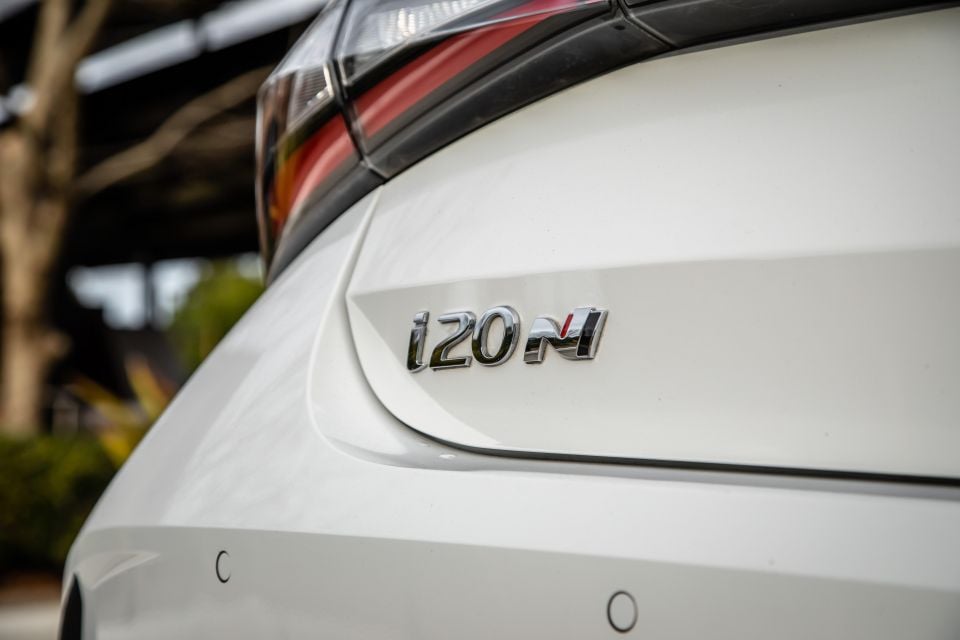
There are harder and softer-riding rivals, but I’d argue the i20 N nails it in the ride and handling department. There’s no question it’s on the firm side, but the level of compliance is just about perfect. It’s such a good balance between ride and handling with accompanying levels of feedback that simply inspire confidence.
Never mind the brakes. The front rotors measure 320mm (not massive), but they’re 40 per cent bigger than those fitted to the garden variety i20 sold in Europe. On track, we never got close to brake fade. On road, they’re bulletproof.
It’s not without its foibles, though. Exit a roundabout to the left or right, or pull out of junction with a bit too much gusto, and you best have both hands on the wheel to help manage the torque steer.
Personally, I don’t mind some front-wheel shenanigans through the steering wheel, at least for the involvement, but less familiar folks might panic.
Plus, the i20 N can suffer from axle tramp, quite badly it seems, especially if the driver is too eager with the throttle from a standing start, or when giving it a boot full from low speed. Not just in the wet, it can also happen in dry conditions as I experienced.
The fix is simple enough. Just curb your enthusiasm and feed in the throttle more progressively before dropping the hammer. Not so easy if you’re having so much fun, I know, but progress will be swifter, I guarantee it.
In an age where cars have never been so fast, or indeed, so expensive, and where performance is singularly measured by 0-100km/h sprint times, it’s truly refreshing to find a car that has been engineered to deliver so much for so little.
Where expert car reviews meet expert car buying – CarExpert gives you trusted advice, personalised service and real savings on your next new car.
Anthony Crawford is a CarExpert co-founder and senior presenter with 20+years in automotive journalism and content creation.


William Stopford
5 Days Ago
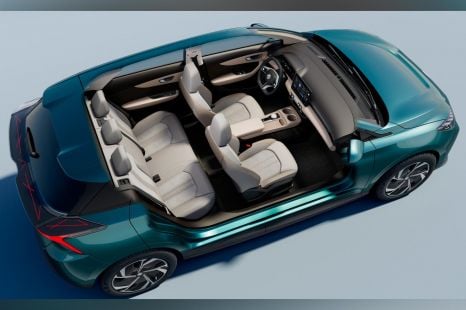

William Stopford
6 Days Ago
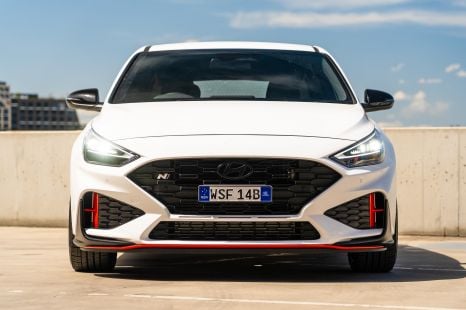

William Stopford
12 Days Ago
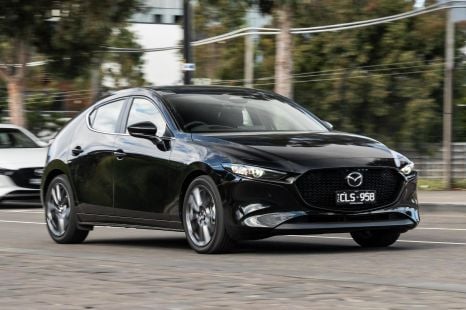

Josh Nevett
20 Days Ago
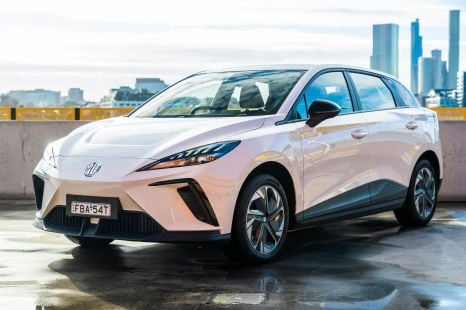

William Stopford
1 Month Ago
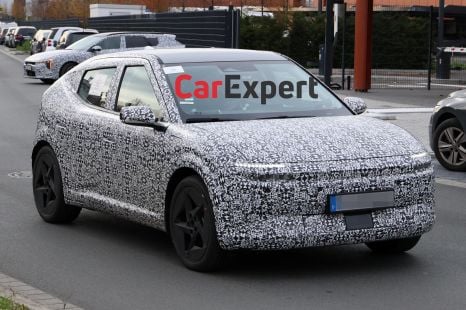

William Stopford
2 Months Ago